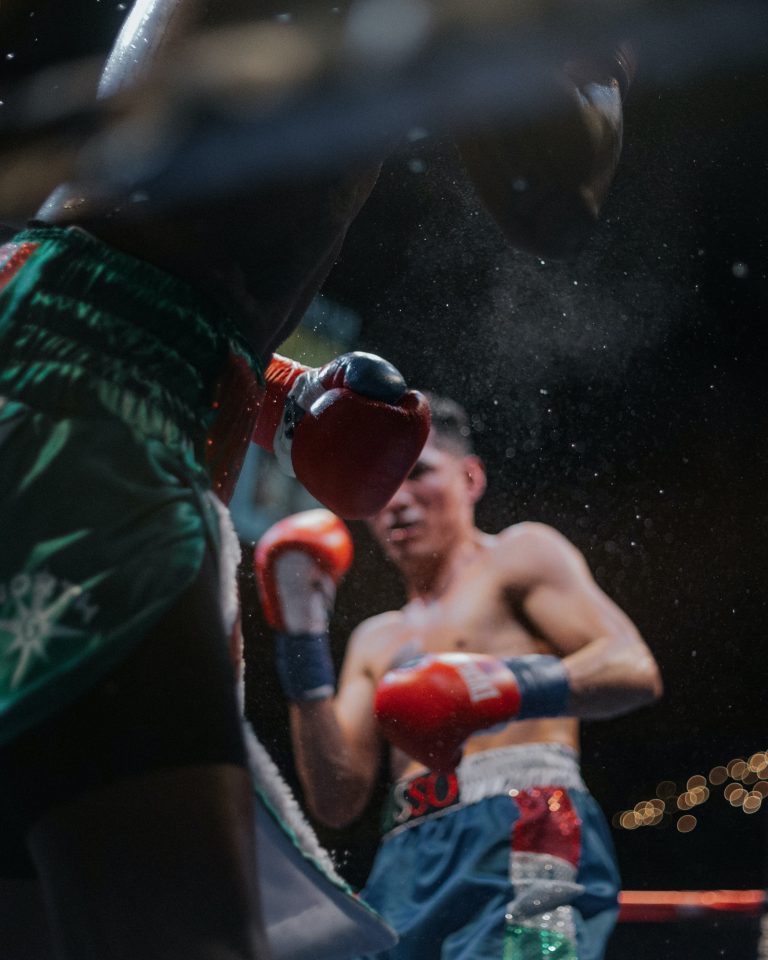Everything You Need to Know About the Difference Between Karate and Taekwondo
The debate between karate and taekwondo has been going on for years. Both styles of martial arts offer practitioners different fitness benefits and ways to increase one’s self-defense skills. The two are often compared, but there are actually some significant differences between them. In this blog post, we’ll take a look at what those differences are to help you decide which of these martial arts best fits your needs and goals.
Background of Karate and Taekwondo
Karate and taekwondo are both disciplines rooted in many centuries of tradition. Karate originated in Japan and is rooted in an indigenous fighting system from the Ryukyu Islands, which is now known as Okinawa. It was later developed into an organized martial art and became popular in mainland Japan in the 18th century. In 1924, a man named Gichin Funakoshi officially established what is now known as modern karate.
Taekwondo comes from Korea and is a traditional Korean martial art that uses kicking and punching as it primary offensive and defensive moves. It was developed during the 1940s by a man named Choi Hong-hi and was created by combining elements of traditional Korean martial arts such as taekkyeon, judo, and karate.
Kyokushin Karate vs Taekwondo
Kata
The primary difference between karate and taekwondo lies in their forms, or kata. Kata are structured patterns of movements that are designed to help practitioners understand techniques and develop muscle memory for those techniques. In karate, the focus is on individual katas, which are meant to be performed solo and contain both offensive and defensive techniques. In contrast, taekwondo typically focuses on poomsae, which are more complex forms that are designed to be performed with a partner and stress control more than techniques.
Equipment
Another major difference between karate and taekwondo is their equipment. Karate usually requires a higher level of equipment than taekwondo, as it emphasizes using striking-focused techniques. Karate practitioners often use gloves, footpads, shin guards, chest protectors, helmets, and mouth guards when sparring or competing. In contrast, taekwondo practitioners typically wear just basic sparring gear consisting of a uniform, mouthguard, and shin guard when practicing or competing.
Tactics
The tactics employed in each style also differ heavily. Karate is a striking-focused art that emphasizes using punches and open-hand strikes in combination with blocking and tackling techniques. This art relies heavily on timing, footwork, precision, speed, power, and strength to allow practitioners to defend themselves.
In contrast, taekwondo focuses more heavily on high-impact kicks as its primary form of offense and defense. This art emphasizes speed more than power when it comes to techniques, allowing practitioners to keep a safe distance from opponents. Taekwondo also uses grappling techniques more heavily than karate does, allowing practitioners to gain an advantageous position over their opponents.
Choosing Between Karate and Taekwondo
When choosing between karate or taekwondo, it really comes down to what your goals are as a practitioner. Do you want to get into shape while learning usable self-defense techniques? Are you looking for something to help you compete in tournaments? Do you prefer to learn complex forms that emphasize control over power?
Answering these questions will help you decide which style best fits what you’re trying to achieve with your martial arts journey. It’s important to keep in mind that both styles have different attitudes towards competitions: while karate is often seen as more of an individual sport, taekwondo emphasizes team-based competitions. It’s also worth noting that both karate and taekwondo offer excellent full-body workouts that strengthen both the mind and body—so no matter which one you choose in the end, both will provide great benefits for your overall physical and mental wellbeing.
Conclusion
Karate and taekwondo are both ancient martial arts with their own strengths and weaknesses. Neither is superior to the other; rather, it depends on which style best fits into your fitness goals and what you wish to achieve with the practice of martial arts. While the two styles have similar benefits when it comes to self-defense, personal growth, and fitness, they have very different approaches when it comes to forms, equipment, and tactics. Ultimately, when deciding between karate or taekwondo, it really depends on what makes you feel comfortable and confident—only you can decide which of these martial arts is right for you!
Everything You Need to Know About the Difference Between Karate and Taekwondo
In this blog post, we will discuss the most frequently asked questions regarding the difference between karate and taekwondo. Both martial arts have a significant following worldwide, and it’s crucial to understand their differences for both practitioners and enthusiasts.
What is the history of karate and taekwondo?
Karate originated in Okinawa, Japan, during the Ryukyu Kingdom around the 18th century. It’s a striking martial art that primarily involves punching, kicking, knee strikes, elbow strikes, and open-hand techniques. On the other hand, taekwondo is a Korean martial art that originated in the 1940s and gained significant popularity globally during the 1960s and 1970s. It primarily involves high kicks, low spins, and jumping and spinning kicks.
What are the fundamental differences between karate and taekwondo?
The fundamental difference between karate and taekwondo is the focus on strikes. Karate focuses on powerful hand and leg strikes designed to incapacitate or knock down opponents, while taekwondo emphasizes faster and flashier kicks and strikes for self-defense purposes.
Additionally, karate practitioners devote significant time to kata or forms, which comprise a set sequence of movements performed solo or in pairs. On the other hand, taekwondo practitioners focus on breaking techniques, which involve splitting boards or blocks with bare hands and feet.
What is the difference in training and techniques?
Training in karate involves a more practical approach to self-defense, with instructors emphasizing forms, stances, and sparring techniques. Karate practitioners use straight punches and roundhouse kicks, while taekwondo emphasizes high-flying kicks, such as spinning hook and jumping back kicks, making it a more acrobatic style.
In taekwondo, practitioners use punches, but they’re not as prevalent as in karate. Taekwondo training usually suggests a more athletic approach, with practitioners spending more time working on finesse, speed, and agility.
What are the differences in the gear and uniform?
Both karate and taekwondo practitioners wear similar but different uniforms. A karate uniform, known as a gi, is usually made of heavier material and is looser-fitting, allowing practitioners to move more freely. Additionally, karate practitioners also wear a belt system to signify their rank and expertise level.
In contrast, taekwondo practitioners wear a tighter-fitting uniform known as a dobok, which is more lightweight and enables greater movement. They also wear a different style of belt, with multiple colors representing various levels of expertise.
What is the difference in competition?
Both karate and taekwondo have competitions at national and international levels. The difference lies primarily in competition style. Karate competitions involve both sparring and kata, and competitors are judged based on their technique, agility, and speed. In contrast, taekwondo competitions focus on sparring, where opponents try to score points with kicks and punches. Points are awarded for landing kicks and punches on the opponent’s torso and head.
What are the benefits of practicing karate and taekwondo?
Both karate and taekwondo offer several benefits, including:
– Improved fitness and agility
– Enhanced self-defense skills
– Improved discipline and focus
– Improved balance and coordination
– Improved flexibility
– Improved self-confidence
Which martial art is better?
It’s difficult to say which martial art is better as both karate and taekwondo have their unique strengths and weaknesses. Ultimately, it comes down to personal preference and what one hopes to gain from practicing martial arts.
Conclusion
In conclusion, karate and taekwondo are both fantastic martial arts with a rich history and following worldwide. The differences in techniques, training, gear, and competition style make for an exciting and diverse martial arts landscape. Whether you’re looking to learn self-defense or improve your fitness and coordination, practicing karate or taekwondo can provide you with numerous benefits that can last a lifetime.
Inhaltsverzeichnis






